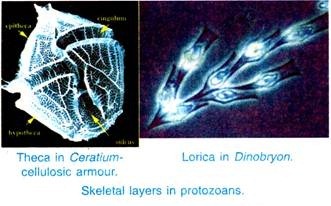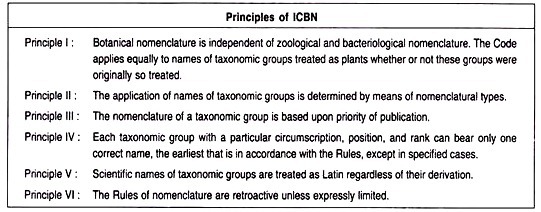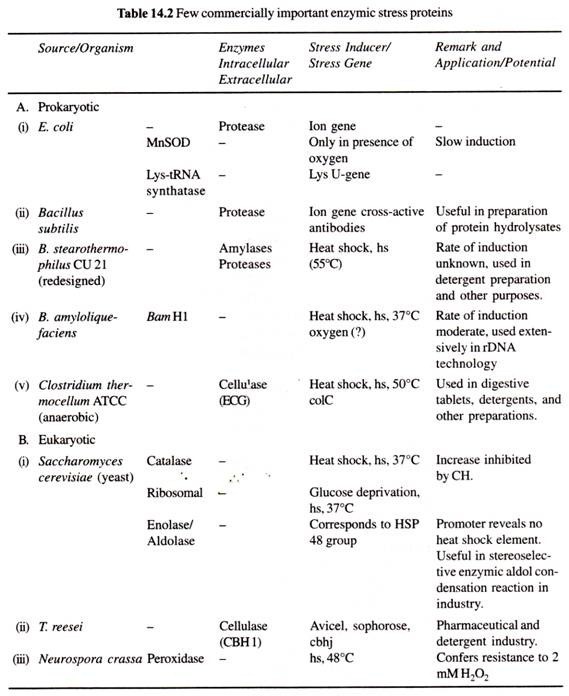Fundamental Properties of Helical Polypeptides:
Among the diverse shapes that can be assumed by polypeptide chains is a helical shape; in fact, helically arranged polypeptides are fundamental to the shape of many fibrous and most globular proteins.
To understand the properties of helical polypeptides, let us first consider the general properties of a geometric helix.
Three parameters define the geometry of a helix; these helical parameters are direction (or handedness), pitch, and radius (Fig. 4-9).
A helix’s direction may be either right-handed or left-handed. In a right-handed helix, rotation is clockwise as the helix winds its way forward around its linear axis. In a left- handed helix, rotation is counterclockwise. Both right-handed and left-handed polypeptide helices are present in naturally occurring proteins.
The forward rotation of a helix around its axis is accompanied by a certain amount of linear translation. That is, every turn of the helix is accompanied by a specific amount of forward movement parallel to the helix’s axis. The amount of forward movement for each 360° turn of the helix is known as the helix’s pitch.
The distance between a point on the backbone of a helix and the axis about which the helix winds is the helical radius; twice this value is the helical diameter. In geometric helices, the diameter is a constant. Unlike a geometric helix, the backbone of a helical polypeptide is not smooth. Rather, it is an irregular curve described by the bond angles between successive atoms of the backbone. Consequently, there is some variation in the diameter of a polypeptide helix.
For helical polypeptides, rules regarding direction and diameter are the same as for geometric helices. The pitch (p) of a helical polypeptide is defined as the product of the number (n) of amino acids per complete turn of the helix and the amount of linear translation per amino acid (d), that is, p = (n)(d), where n may be a whole number or a fraction. By definition, the sign of n is positive when the helix is right-handed and is negative when the helix is left-handed.
Hydrogen Bonds and Helix Stability:
The helix conformation of a polypeptide is not intrinsically stable; indeed, were the peptide bonds that link the amino acids of the polypeptide chain together the only forces between amino acids, the chain would exist in any of a variety of random shapes. The stability of the highly ordered conformation of a helix is maintained by a number of additional interactions between amino acids. Particularly important among these interactions are weak electrostatic forces, called hydrogen bonds that occur between one part of the helix and another.
Hydrogen bonds are a result of the differential attraction that atomic nuclei have for their orbital electrons (the attraction for an orbital electron is called electrophilia). For example, in a carbonyl group, the oxygen atom is more electrophilic than the carbon atom; consequently, the electron density in the vicinity of the oxygen nucleus is greater than in the vicinity of the carbon nucleus.
Thus, a small negative electrostatic charge is associated with the oxygen atom and a small positive electrostatic charge is associated with the carbon atom. These charges are called partial charges because they do not represent full electrostatic units; they are respectively denoted 5 + and 8– (Fig. 4-10).
Partial charges are also distributed between the nitrogen and hydrogen atoms of an amide group, because the hydrogen nucleus is far less electrophilic than the nitrogen nucleus. Weak electrostatic bonds can be formed between the partially positive hydrogen atom of an amide group and the partially negative oxygen atom of a carbonyl group (Fig. 4-10). These bonds are called hydrogen bonds because, in effect, the carbonyl oxygen and amide nitrogen are bonded together by the “sharing” of the hydrogen atom.
In helical polypeptides, hydrogen bonds exist between the oxygen atoms of a-carbonyl groups and the hydrogen atoms of a-amino groups of amino acid residues that are separated by various distances along the backbone of the helix.
The Alpha Helix:
One of the most common types of helix found in proteins is the alpha helix. The properties of this helix were determined in the 1930s and 1940s by Pauling and Corey by X-ray analysis of alpha keratin (a protein present in hair). In an alpha helix, there are 3.6 amino acids per turn (i.e., n = 3.6), and there is a linear translation of 1.5 A (0.15 nm) per amino acid. This results in a pitch of 5.4 Å (0.54 nm).
Physical properties of the alpha helix are compared with other polypeptide conformations in Table 4-3. In the alpha helix (and in all other polypeptide helices), the R-groups of the amino acids are directed radially away from the helix’s axis. The hydrogen bonds that contribute to the stability of this helix occur between the a-carbonyl oxygen atom of one residue and the a-amino hydrogen atom of another that is three residues farther along the backbone (Figs. 4-11 and 4-12).
Each hydrogen bond links the carbonyl oxygen and amino hydrogen atoms at the ends of a sequence of 13 covalently bonded atoms of the polypeptide (count the atoms forming this loop in Fig 4-11). For this reason, the alpha helix is also identified as 3.613 helix (i.e., n=3.6). Although the direction of an alpha helix can be right-handed or left-handed, only right-handed alpha helices are present in naturally occurring proteins. Figure 4-13 is a stereoscopic diagram of a portion of a right-handed alpha helix.
With a single exception, any of the 20 common amino acids can occupy a position in an alpha helix. The exception is the secondary amino acid pro-line. The covalent bond that exists between the R-group of this amino acid and its α-amino group so constrains pro-line’s spatial relationships with neighboring amino acids that it cannot satisfy the parameters of the alpha helix. For this reason, many alpha helical regions of polypeptide chains either begin or end at a position occupied by pro-line or are interrupted by pro-line, producing an abrupt bend in the helical chain.
Pi and 310 Helices:
Among other helix types that occur in proteins are the right-handed forms of the pi (or 4.416) helix and the 310 helix. The hydrogen bonding patterns that stabilize these helices are compared with that of the alpha helix in Figure 4-12. Other physical properties are compared in Table 4-3. In comparison with the pi and 310 helices, the hydrogen bonding pattern of the alpha helix is strain-free, the hydrogen bonds being parallel to the helix’s axis. The pi and 310 helices are formed only with varying degrees of internal strain, and it is therefore not surprising that the alpha helix is so much more common in proteins than the other two right- handed forms.
Beta Conformations:
Another common polypeptide conformation in proteins is the beta conformation. In the beta conformation, the polypeptide chain is nearly fully extended so that the backbone of the polypeptide follows a zigzag path and is not helical in the conventional sense.
Stabilization of the beta conformation’s ordered structure is through hydrogen bonding, but the hydrogen bonding is quite different than that in the alpha, pi, and 310 helices. In proteins possessing this- conformation, stretches of polypeptide in beta conformation lie parallel to one another, with hydrogen bonds formed between the a carbonyl groups in one stretch and the a-amino groups in the neighboring stretch.
The stretches of polypeptide may be portions of the same chain or different chains. This arrangement is depicted in Figure 4-14 and is called a beta pleated sheet. In the beta pleated sheet, all peptide linkages participate in the formation of the hydrogen bonds, so that collectively they impart considerable stability to the structure.
A polypeptide chain is said to have polarity in that the order of covalently bonded atoms forming the backbone of the chain is not the same in both directions. One end of a chain contains an a-amino group that does not participate in a peptide linkage and the other end of the chain contains an a-carboxyl group that does not participate in a peptide linkage.
These ends are respectively called the amino (or N) terminus and the carboxyl (or C) terminus of the polypeptide. If the polarities of neighboring polypeptide chains are the same, they are said to be parallel; if they have opposite polarities, they are said to be antiparallel. Parallel and antiparallel versions of the beta pleated sheet structure occur in proteins.
The polypeptide chains of silk fibers are arranged in the form of an antiparallel beta pleated sheet, as shown in Figure 4-14. Because neighboring chains are nearly fully extended, the protein resists stretching, although there is lateral flexibility between chains. The enzyme superoxide dismutase (present in red blood cells) contains regions of antiparallel beta pleated sheet structure.
Hence, the beta conformation is not restricted to fibrous proteins but is present also in globular proteins. A mixture of parallel beta pleated sheet structure and helical structure has been identified in phosphofructokinase, an enzyme involved in the glycolytic pathway.
Polyproline Helixes and the Structure of Collagen:
The unusual structure of the amino acid pro-line causes this residue to be incompatible with the alpha helix conformation. However, polypeptide chains consisting only of proline residues (i.e., “polyproline”) do form left-handed helices. The structure of polyproline is fundamental in the organization of the most abundant protein in animal tissues—collagen.
Although species variations exist, in most collagens, proline (and hydroxyproline) accounts for more than 20% of the protein’s amino acids, with the remainder predominantly represented by glycine and alanine. A. Rich, F. H. C. Crick, and G. Ramachandran have shown that the rodlike collagen molecule is formed by the braiding of three polypeptide chains. Each chain, like polyproline, is twisted to form a left-handed helix having three amino acids per turn (i.e., n= -3), and these are twisted around one another to form a super helix that is right-handed. The organization of a portion of a collagen molecule is shown in Figure 4-15.
In collagen, every third amino acid of each left- handed helix is glycine, whose R-group is sufficiently small (i.e., the R-group is a hydrogen atom) to allow its projection into the core of the molecule. The distribution of the glycines is believed to be fundamental to the intimate intertwining of the three chains.
The association between chains is stabilized by hydrogen bonds between proline and hydroxyproline residues in the neighboring chains. The arrangement of the three helices of the collagen super-helix accounts for the molecule’s tensile strength and resistance to stretching.
Random Coils:
Most proteins contain stretches of polypeptide in which successive planar amide groups do not have identical ψ and ф values. Although these regions may be coiled, they do not form helices of a specific repeat pattern. Such stretches are called random coils.
The term “random” is not to be interpreted as implying that the ψ and ф values between specific planar amide groups of the polypeptide undergo continuous and random change. Indeed, for a specific protein, the ψ and ф values of successive planar amide groups of a random coil are fixed; they just are not identical in successive groups. In some proteins, random coils account for a large percentage of the total structure.







